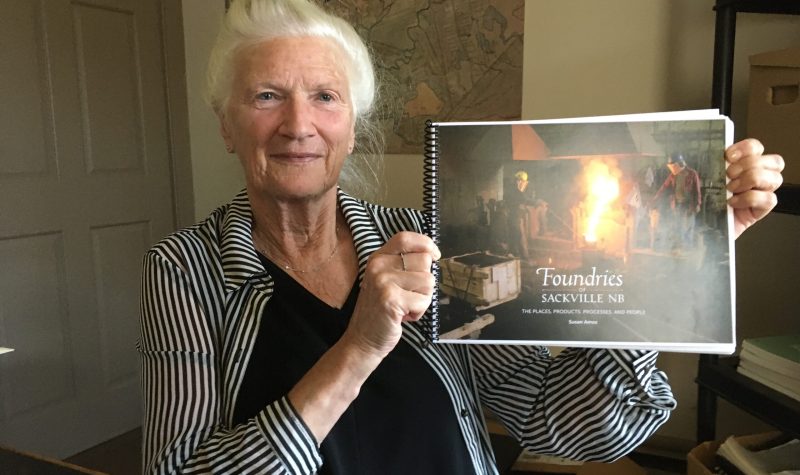If you had told Susan Amos three years ago that she would end up writing the book on the Sackville foundries, she would not have believed you.
“I would have said, what exactly is a foundry?” says Amos with a laugh. “But I ended up doing it.”
Amos is launching Foundries of Sackville, NB this Saturday with a slide presentation and talk at town hall at 2 p.m. The book is already available for purchase through the Tantramar Heritage Trust.
Part of Amos’s inspiration for documenting the foundries was her family connection: a great uncle was hired by Charles Fawcett in the early 1900s as a designer for the foundry. And when she found out there were no books published on the town’s manufacturing stalwarts, she decided to get to work.
“They were a major employer in our town for years,” says Amos. “Eight generations of employees, thousands and thousands of workers, and no books. So I wanted to have a book so that we don’t lose this part of our heritage.”
The publication of Foundries of Sackville is timed to coincide with celebrations this year of the 170th anniversary of the Fawcett Foundry and the 150th anniversary of the Enterprise Foundry.
Listen to Susan Amos talk foundries on Tantramar Report:
Amos says, “it took a village” to write the book. She estimates she spoke with about 50 locals in her research, and is grateful to Mount Allison librarian Elizabeth Miller (“my angel librarian”) for research help.
The foundries started out specializing in cast iron products, before branching out into other products. “So the old wood stoves that we know about, water heaters, room heaters, fireplace grates, anything at all that was made of cast iron, it was made in the foundry,” says Amos.
“And then as technology improved and advanced, they began to make steel products,” says Amos. The factories branched into modern electric and combination ranges, and even pioneered Canada’s first domestic microwave, produced by Enterprise Foundry in 1977.
“They went from a very limited number of products to just all kinds of things,” says Amos. “And the plants were huge. They had so many shops and different things that they did. It was really a learning experience to learn all about the different operations that went on in the foundries.”
Amos’s book includes archival images and stories from the history of the three Sackville foundries, Fawcett’s, Enterprise, and Enterprise-Fawcett which burned down in a fire in 2012.
The foundries employed up to 800 people in their heydays in the 1950s, but by 2012 had less of a role in the economic life of Sackville. Amos says there were only about 60 people still working at Enterprise Fawcett in 2012, and it was seasonal work which shut down in the winter.
“The industry was just going downhill all over the world. It wasn’t just here in Sackville,” says Amos. “It wasn’t such a big shock when the foundry finally closed. Everyone had kind of seen the writing on the walls.”
For more information on the launch of Foundries of Sackville, NB this Saturday at 2 p.m. at town hall, check out the Tantramar Heritage Trust.


